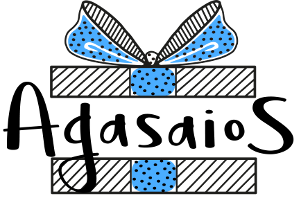A mannequin could be trained at the character, n-gram, sentence, or paragraph stage. Feed-forward neural networks haven’t any memory of the enter they obtain and are poor predictors. A feed-forward network has no concept of time order as a result of it solely considers the current input. To fully comprehend RNNs, you should first understand “regular” feed-forward neural networks and sequential knowledge. In a method, recurrent neural network stock prediction is one of the purest representations of RNN purposes.
- Used by Microsoft Clarity, Connects multiple page views by a consumer right into a single Clarity session recording.
- Not Like normal neural networks that excel at tasks like image recognition, RNNs boast a novel superpower – memory!
- Primarily Based on the sort of RNN if we want to predict output at each step, this hidden state is fed right into a softmax layer and we get the output for the current time step.
- Hidden layers in RNN serve as memory areas for storing the outputs of a layer in a loop.
- Tanh perform gives weightage to the values which are passed, deciding their level of significance (-1 to 1).
- One solution to the issue is identified as lengthy short-term reminiscence (LSTM) networks, which computer scientists Sepp Hochreiter and Jurgen Schmidhuber invented in 1997.
This can make it obscure how the community is making its predictions. Though RNNs are designed to seize details about past inputs, they will wrestle to capture long-term dependencies in the enter sequence. This is as a outcome of the gradients can turn out to be very small as they propagate via time, which may cause the network to overlook necessary information. In a feed-forward neural community, the selections are primarily based on the present enter.
Deep Learning Interview Questions And Solutions
They have feedback connections that permit applications of recurrent neural networks them to retain information from earlier time steps, enabling them to capture temporal dependencies. RNNs are well-suited for tasks like language modeling, speech recognition, and sequential knowledge evaluation. Conventional neural networks are inefficient when dealing with sequential data because they’ve independent input and output layers.
What if a software program generates results from a data set and saves the outputs to enhance the outcomes within the future? MLPs consist of several neurons organized in layers and are often used for classification and regression. A perceptron is an algorithm that can study to carry out a binary classification task. A single perceptron can’t modify its own structure, so they’re usually stacked together in layers, the place one layer learns to recognize smaller and more specific features of the data set. In a typical synthetic neural community, the forward projections are used to foretell the long run, and the backward projections are used to judge the past.
Machine Translation (MT) is an automatic textual content conversion from one language to another. General, Fraud Prevention relies on predictive algorithms to show criminality. If you want to read extra about Sentiment evaluation – we have an article describing the technology itself and in addition a bit detailing its business use.
Learn More About Webengage Privacy

If a sequence is lengthy enough, they’ll have a hard time carrying data from earlier time steps to later ones. So in case you are making an attempt to process a paragraph of textual content to do predictions, RNN’s could omit essential information from the beginning. RNNs course of sequential information step-by-step, updating their hidden state at every time step. This allows them to retain relevant previous info and use it for future predictions.
Another distinguishing attribute of recurrent networks is that they share parameters across every layer of the network. Whereas feedforward networks have totally different weights across each node, recurrent neural networks share the same weight parameter inside every layer of the community. That stated, these weights are still adjusted through the processes of backpropagation and gradient descent to facilitate reinforcement studying. Every word in the phrase “feeling underneath the climate” is part of a sequence, where the order issues.

This can embody sentiment analysis (e.g., constructive or unfavorable reviews), topic classification, author identification, and spam detection. Hidden layers in RNN serve as reminiscence areas for storing the outputs of a layer in a loop. At its core, the algorithm is designed to recognize one unit of input (the image) into a quantity of groups of output (the description of the image). Study tips on how to confidently incorporate generative AI and machine studying into your small business Prompt Engineering. As an example, let’s say we wanted to predict the italicized words in, “Alice is allergic to nuts. She can’t eat peanut butter.” The context of a nut allergy may help us anticipate that the meals that cannot be eaten incorporates nuts.
An RNN can deal with sequential data, accepting the current input information, and previously received inputs. Recurrent neural networks are a step further than feedforward neural networks (FNN), which don’t enable feedback. In FNNs, information flows in only one course, to the following highest layer. Though FNNs can recognize patterns, they can not entry info that has already been processed. Many to Many RNN models, as the name implies, have a number of inputs and produce a number of outputs.

Recurrent models can “remember” data from prior steps by feeding back their hidden state, allowing them to seize dependencies across time. RNNs enable the network to “remember” previous information by feeding the output from one step into subsequent step. This helps the network understand the context of what has already happened and make higher predictions based on that. For instance when predicting the next word in a sentence the RNN uses the earlier words to help resolve what word is more than likely to return next. Recurrent Neural Networks (RNNs) work a bit different from regular neural networks. In neural community the knowledge flows in a single https://www.globalcloudteam.com/ course from enter to output.
As one of many premier recurrent neural community examples, semantic search is probably one of the instruments that make it easier and rather more productive. In addition to that, semantic search simplifies the continuous updates and revisions of the information base. This is crucial for updating network parameters based on temporal dependencies. Practice, validate, tune and deploy generative AI, foundation models and machine studying capabilities with IBM watsonx.ai, a next-generation enterprise studio for AI builders. Construct AI functions in a fraction of the time with a fraction of the info. RNNs can endure from the issue of vanishing or exploding gradients, which may make it troublesome to coach the network successfully.
A random forest incorporates a big group of decision timber that each make a prediction about the input. Each of the decision bushes within a random forest mannequin might have slightly different questions at each branch of the tree, which permits the algorithms to return to choices in several methods. This approach may help account for the entire variables that might change the right answer.
RNNs, with their capacity to process sequential information, have revolutionized varied fields, and their impression continues to grow with ongoing analysis and advancements. In a normal RNN, a single input is shipped into the network at a time, and a single output is obtained. On the other hand, backpropagation uses both the current and prior inputs as input. This is referred to as a timestep, and one timestep will encompass a quantity of time collection information points getting into the RNN simultaneously.
For those who need to experiment with such use circumstances, Keras is a well-liked open source library, now built-in into the TensorFlow library, offering a Python interface for RNNs. The API is designed for ease of use and customization, enabling users to define their own RNN cell layer with custom behavior. Passionate about Data Analytics, Machine Learning, and Deep Learning, Avijeet can be excited about politics, cricket, and football.
